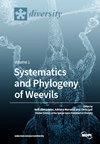Environmental Correlates to Genetic Diversity and Structure in Invasive Apple Snail (Pomacea canaliculata) Populations in China
IF 2.1
3区 生物学
Q2 BIODIVERSITY CONSERVATION
引用次数: 0
Abstract
Invasive species are one of the most serious threats to biodiversity. Pomacea canaliculata is considered one of the world’s 100 worst invasive species. Major determinants of invasive species distribution are their environmental tolerances, and an understanding of correlations between local environmental variables (e.g., pH, concentration of dissolved oxygen) and genetic diversity is necessary to better prevent and manage the spread of invasive species. However, while such studies have demonstrated associations between the distribution and density of P. canaliculata and water quality correlates, the principal mechanisms relating genetic and these environmental correlates have not been fully articulated. Here, the correlation between physicochemical parameters and genetics of P. canaliculata were analyzed. The results showed that P. canaliculata among the six collection locations had robust genetic diversity, significant genetic differentiation, limited gene flow, and stable population dynamics. RDA analysis showed that genetic variation in P. canaliculata was significantly correlated with concentration of dissolved oxygen and pH. These results will provide a basis for effectively preventing and managing the spread of invasive species and identifying which habitats may be more at risk of invasion.中国苹果蜗牛(Pomacea canaliculata)入侵种群遗传多样性和结构的环境关系
入侵物种是对生物多样性最严重的威胁之一。Pomacea canaliculata被认为是世界上100个最严重的入侵物种之一。入侵物种分布的主要决定因素是其环境耐受性,了解当地环境变量(如pH值、溶解氧浓度)与遗传多样性之间的相关性对于更好地预防和管理入侵物种的传播是必要的。然而,虽然这些研究已经证明了小管藻的分布和密度与水质相关因素之间的联系,但与遗传和这些环境相关因素有关的主要机制尚未得到充分阐明。在此基础上,分析了小管藤理化参数与遗传的相关性。结果表明,6个采集点间小管柳具有较强的遗传多样性、显著的遗传分化、有限的基因流动和稳定的种群动态。RDA分析结果表明,小管松木的遗传变异与溶解氧浓度和ph值呈显著相关,为有效预防和管理入侵物种的扩散以及识别入侵风险较高的生境提供了依据。
本文章由计算机程序翻译,如有差异,请以英文原文为准。
求助全文
约1分钟内获得全文
求助全文
来源期刊

Diversity-Basel
Environmental Science-Ecological Modeling
CiteScore
3.40
自引率
12.50%
发文量
925
审稿时长
11 weeks
期刊介绍:
Diversity (ISSN 1424-2818) is an international and interdisciplinary journal of science concerning diversity concept and application, diversity assessment and diversity preservation. It is focused on organismic and molecular diversity. It publishes reviews, regular research papers and short notes in the regular issues. Related news and announcements are also published. Our aim is to encourage scientists to publish their experimental and theoretical results in as much detail as possible. Therefore, there is no restriction on the length of the papers. Full experimental details must be provided so that the results can be reproduced.
 求助内容:
求助内容: 应助结果提醒方式:
应助结果提醒方式:


